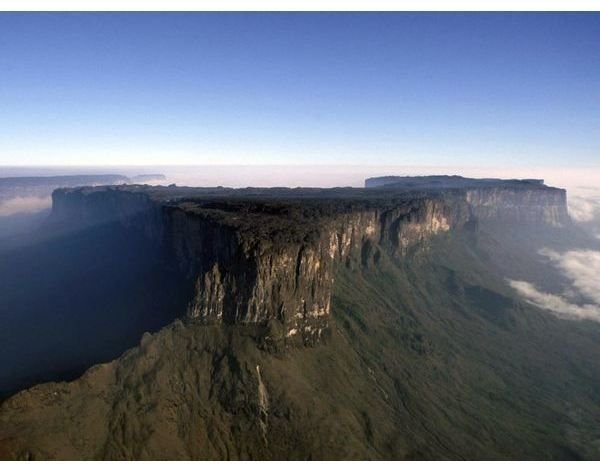What is a Plateau and How are Plateaus Formed?
What is a Plateau?
A land formation that is known as tableland in geological terms is characterized by an elevated and flat plain of land that resembles a table. These tablelands are also called mesas and buttes which can both be considered plateaus. Steppes are also under the category of tableland but they are non-raised large flat areas of land. In answering the question of what is a plateau? specifically it can be a large or small raised area of flat land that is separated from the rest of its surrounding land by slopes on each side of the plateau.
Mesas and buttes are just different forms of plateaus. A mesa is basically a small plateau that is more isolated from the surrounding landscape and has distinct cliff type edges to it. A butte is a larger plateau than a mesa and has steeping slope edges that separate it from the surrounding landscape.
You can learn more about geological subjects in environmental science, by checking out How Deserts are Formed and Interesting Facts about Geology.
How are Plateaus Formed?
There are different ways in which plateaus can develop but in each case the creation of the land formation is not an instant geological act as it can take millions of years for these raised, flat areas of land to be built.
One way in which plateaus are created are when magma pushes up towards the surface of the Earth’s crust. The magma does not break through but instead raises a section of the crust up as it rises and creates a plateau. Another way in that can create plateaus is when lava breaks through the Earth’s crust and builds upon itself over and over to form a raised land area.
The most common answer to the question of how plateaus are formed is in that of the effects that millions of years of wind and water erosion can have on land areas. Water, flowing in specific patterns will break down layers of rock over time and carve out channels that will continually dig deeper down. As the water digs its way down, steep slopes are created and that forms the edges of the plateau. Wind affects the land’s layers of rock much in the same way that water does, as the water exposes more layers, the wind erodes the area more and helps in the steepness of the sides that make the base of the plateau.
In the image at the upper left is Mount Roramia, a large plateau in Venezuela. This plateau is of the mesa type due to the isolation of pleateau and can be seen by visiting the Canaima National Park of South America.
*image is provided by and © 1996-2010 The National Geographic Society
References: U.S. Geological Survey and the Mountian State University’’s Science Education Resource Center at Carlton College
